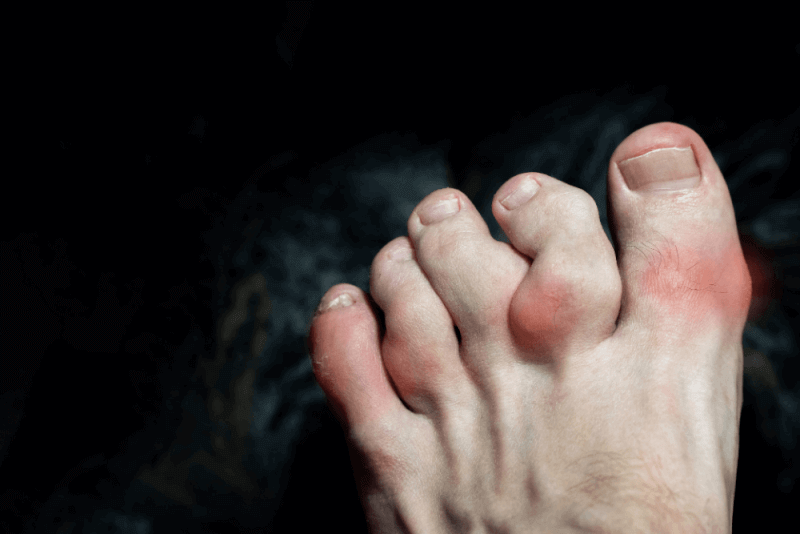30 Second Summary
- Hip dislocation occurs when the femur bone dislocates from the hip joint, typically due to trauma.
- In the case of dislocation, the leg is fixed and may rotate inward or outward; acute pain and muscle spasms are common symptoms.
- If untreated, complications like nerve damage, osteonecrosis, and arthritis may occur.
- Treatment methods include closed reduction, surgery if necessary, followed by physical therapy.
What is Hip Dislocation?
Hip dislocation occurs when the femur bone is displaced from the socket in the pelvis. This condition causes significant pain and is usually caused by traumatic events. It is more common in patients with artificial hip prosthetics.
Hip dislocation is considered an emergency condition. It not only causes acute pain but can also lead to the loss of function in the leg until corrected. Additionally, it may cause secondary damage to the surrounding nerves, ligaments, and other tissues. Therefore, failure to treat hip dislocation promptly can lead to long-term damage.
In some cases, hip dislocation may result from a developmental condition called hip dysplasia, which causes the hip socket to be too shallow to properly hold the femoral head. This condition is also referred to as developmental hip dislocation. People with hip dysplasia have loose joints and weaker muscles and ligaments, so less force is required for the joint to become dislocated.
What is Hip Subluxation?
Hip subluxation refers to partial dislocation, where the joint partially slips but does not fully dislocate. Subluxation can be mild or severe. In severe cases, it causes pain and weakness similar to a full dislocation, and the joint may need to be realigned by a specialist.
In mild cases, the cartilage that helps the joint fit in the socket may wear down due to general wear and tear, leading to chronic subluxation. In mild cases, patients may still walk and relieve the dislocation by gently stretching the joint.
What Causes Hip Dislocation?
Hip dislocations are typically caused by traumatic injuries. Normally, significant force is required to dislocate the joint. The most common cause is traffic accidents, followed by severe falls or sports injuries.
Another common cause of hip dislocation is hip dysplasia. In this condition, small activities are enough to cause a dislocation.
Symptoms of Hip Dislocation
When hip dislocation occurs, the leg is typically locked in a fixed position. The leg may rotate inward or outward. In 90% of cases, the hip joint is pushed backward in the socket, causing internal rotation of the knee or foot, referred to as posterior dislocation.
If the hip is pushed forward in the socket, it results in anterior dislocation, causing external rotation of the knee or foot. The affected leg may appear shorter or longer. If the hip is misaligned, swelling or discoloration may occur. Other symptoms of hip dislocation include:
- Acute pain
- Muscle spasms
- Color change or swelling in the hip joint
- Leg rotation (inward or outward)
- Inability to move the leg
- Inability to bear weight on the leg
- Numbness in the hip or foot
- Clear visual indication of dislocation
Complications of Hip Dislocation
Hip dislocation can cause damage to the nerves, tendons, and tissues around the joint. In such cases, the damaged tissues must be repaired individually. Some of these injuries may result in long-term effects, including:
Nerve Damage
The dislocated joint may affect the sciatic nerves, which extend from the lower back to the hip and down the leg, potentially causing chronic pain known as sciatica. Damage to these nerves may impair the ability to move the foot and toes.
Osteonecrosis
If the femoral artery is damaged, blood flow to the bone is affected. When blood flow is cut off, bone tissue begins to die, leading to small fractures and compromising the bone's structural integrity. This condition is known as osteonecrosis or avascular necrosis.
Arthritis
Hip dislocation can damage the cartilage around the joint and the labrum, leading to arthritis and an increased likelihood of requiring hip replacement surgery in the future.
Diagnosis of Hip Dislocation
A specialized doctor can usually diagnose hip dislocation based on appearance. However, a thorough physical examination is necessary to detect other injuries. Imaging tests like X-rays and CT scans may be ordered to better visualize the bone positions and check for fractures before attempting realignment.
Treatment Methods for Hip Dislocation
If hip dislocation is suspected, the leg should not be moved. Emergency medical help should be sought immediately. The injury causes severe acute pain, and prompt treatment is necessary to minimize long-term damage. Reducing the dislocation requires medication and intervention by a trained specialist.
Before realigning the joint, any secondary injuries must be assessed. If the joint is realigned within a few hours after the injury, the success rate is high. If secondary injuries are present, surgical intervention may be required.
Closed Reduction
Reducing the dislocated hip involves physically placing the joint back into its socket. This procedure is called reduction. If no secondary injuries are present, the realignment can be done externally through a closed reduction.
The amount of force required to dislocate the hip is the same as the force needed to place it back into the socket. During the procedure, healthcare providers may administer a combination of anesthetics and sedatives to reduce pain and muscle spasms. In some cases, general anesthesia may be required.
Surgical Treatment for Hip Dislocation
In cases of significant secondary injuries, open reduction surgery may be required to repair nerves and blood vessels. Surgery is also the preferred treatment for infants with hip dislocation. During the surgery, the joint is stabilized to prevent future dislocations, with a success rate of 90% in infants.
In patients with hip prosthetics, surgery may be necessary if a dislocation occurs. The prosthesis may need to be reinforced or replaced during the surgery.
Benefits of Hip Dislocation Surgery
If damage occurs to surrounding tissues, hip dislocation surgery can help repair the damage and prevent long-term health issues.
Complications of Hip Dislocation Surgery
The most serious complication of hip dislocation surgery is deep vein thrombosis (DVT). Although rare, this complication can be prevented by using blood thinners for a period of time.
Infection is another major risk, so post-surgical monitoring for fever, redness, and swelling is crucial.
Recovery After Hip Dislocation
After the joint is reduced, it may take two to three months for the hip to fully heal. During the recovery period, movement may be restricted for several weeks. Physical therapy may be required afterward. During the first weeks, crutches may be needed for walking.
In patients with hip prosthetics, additional support may be needed to secure the prosthesis during the recovery period.







